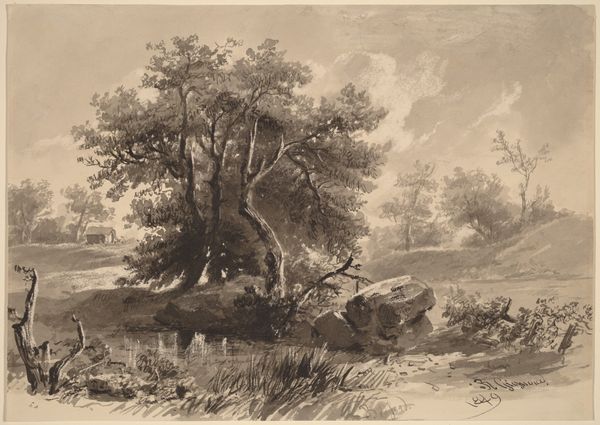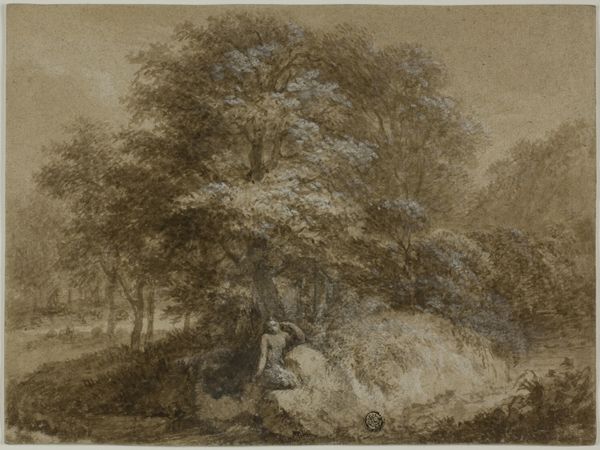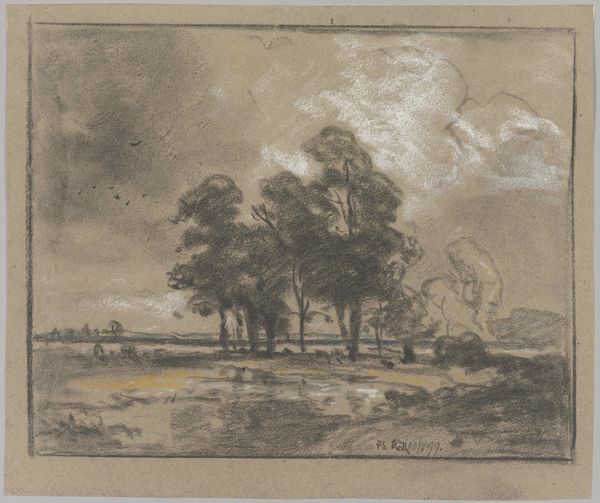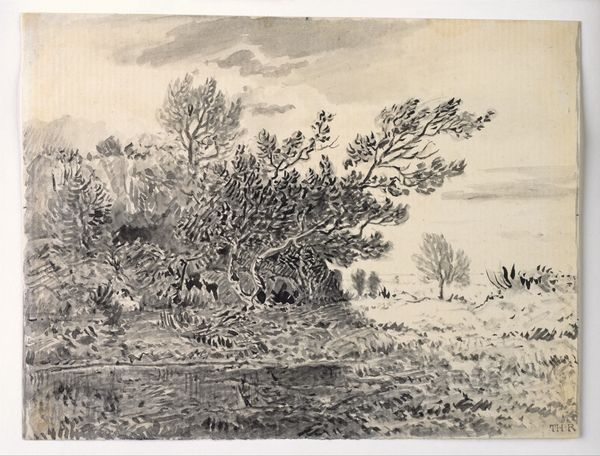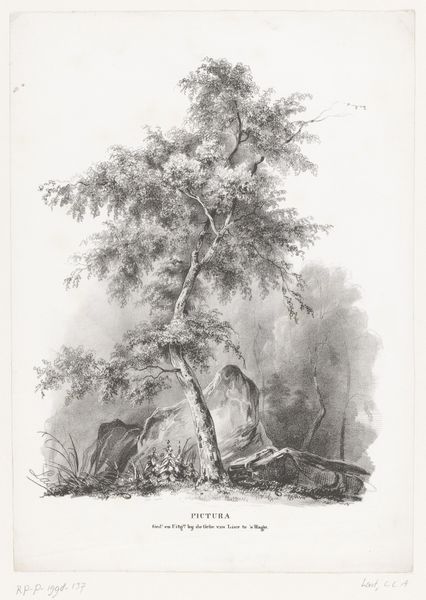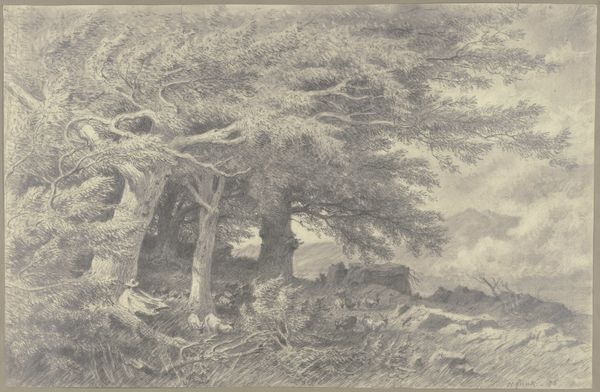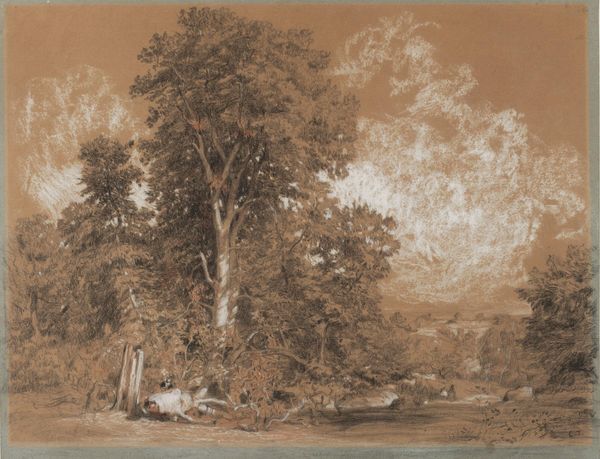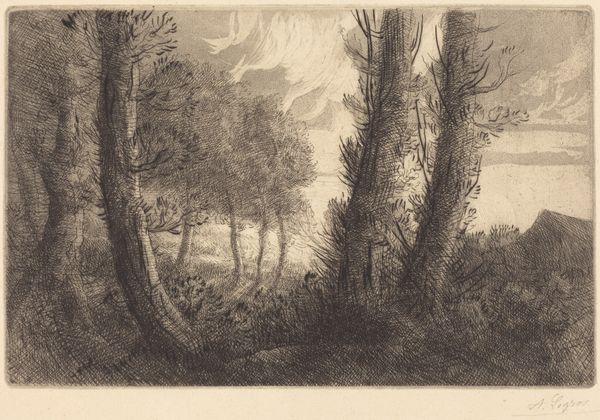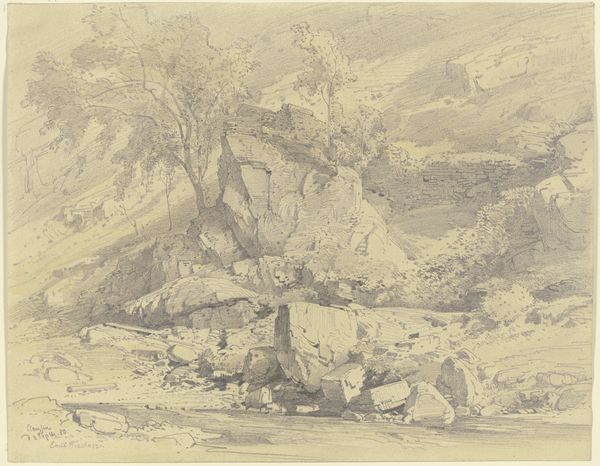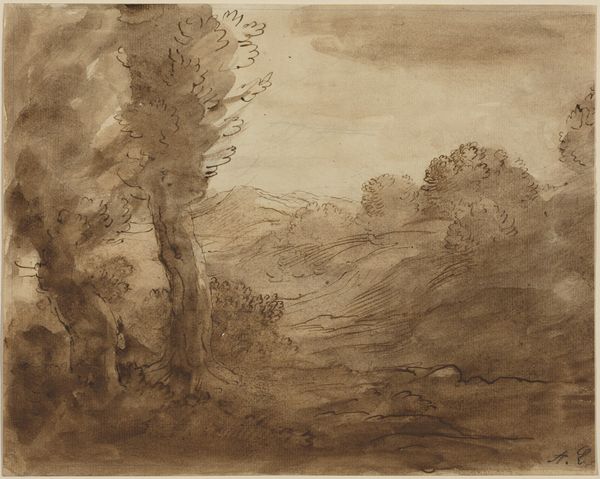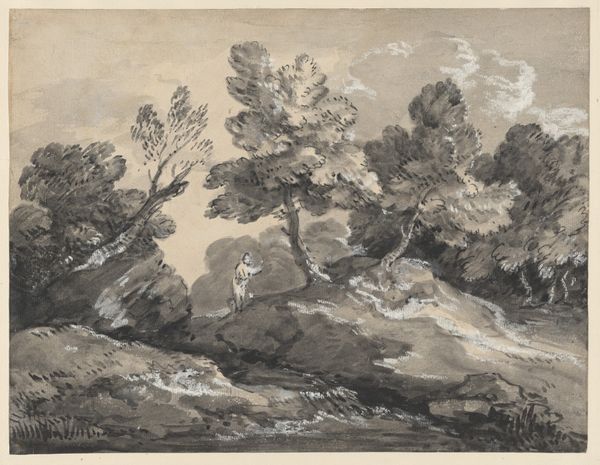
drawing, plein-air, watercolor, charcoal
#
drawing
#
16_19th-century
#
plein-air
#
landscape
#
charcoal drawing
#
watercolor
#
forest
#
romanticism
#
watercolour illustration
#
charcoal
#
watercolor
Copyright: Public Domain
Curator: Here we have Johann Wilhelm Schirmer’s “Forest Landscape with Lake and Swans,” created around 1830 to 1834. It's currently held at the Städel Museum. What are your initial thoughts? Editor: There's a subdued, almost melancholic quality to this work. The charcoal and watercolor medium gives the scene a dreamlike feeling. Curator: Schirmer's choice to use charcoal and watercolor speaks volumes about his engagement with the Romantic movement. Plein-air drawing, as evident here, offered artists new modes of understanding nature's grandeur. It encouraged the emotional resonance we observe. It is more than just landscape. Editor: I see it as a reaction against industrialization, too. This scene idealizes nature as refuge and as a place where humans can just exist without having to alter. But do we really know what “nature” is? Who gets to speak for nature? Whose nature? Curator: It definitely raises some of the pertinent questions about constructed landscapes. The Romantic movement's gaze was inevitably filtered through a particular lens. We need to acknowledge the privileged position from which these landscapes were often produced. Schirmer was employed by wealthy families, so how do their biases show in the representation? How does this limit our own access to this natural scenery? Editor: I think it comes up subtly through his emphasis on serenity and contemplation. The lake is calm, and the swans seem to glide without a care in the world. This resonates with how nature has always been used and commodified to portray an idyllic, peaceful setting for people. I suppose this all brings it back to Romanticism and this inherent need to seek out idealized locations. It ignores social stratifications in its time to do this. Curator: I agree. Recognizing the politics embedded within these seemingly passive scenes empowers us to engage with them more critically, allowing for richer appreciation, too, wouldn't you say? Editor: Precisely. Instead of accepting this depiction of landscape, we confront its cultural construction and historical implications, giving it new meaning. Curator: Thank you. It gives food for thought, for sure.
Comments
No comments
Be the first to comment and join the conversation on the ultimate creative platform.
